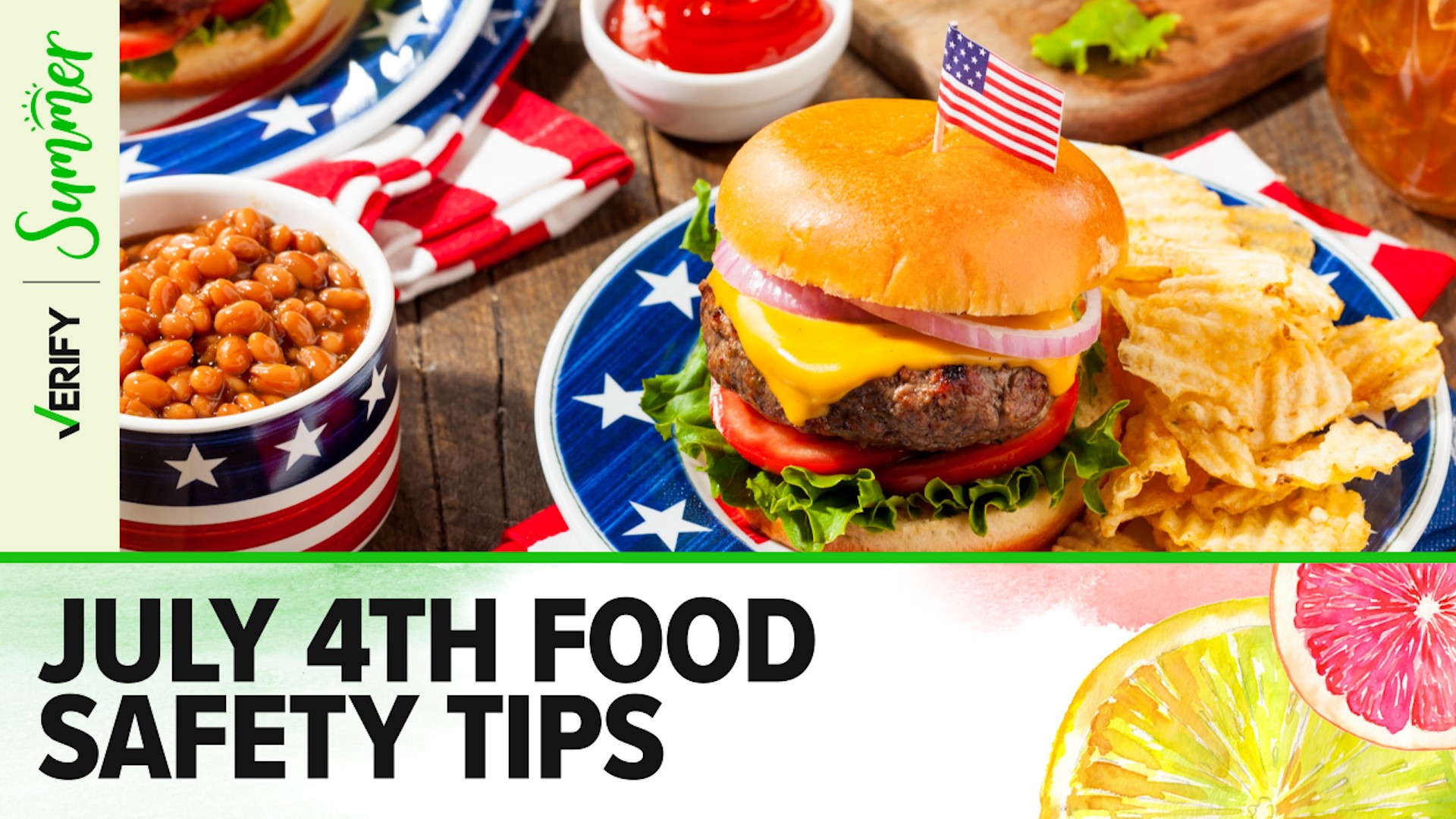Summer is the perfect season to fire up the grill or host a cookout. The last thing you want to be worrying about during a fun party is foodborne illness.
Here are five food safety tips to keep you and your guests safe at your next cookout.
THE SOURCES
WHAT WE FOUND
No matter if you’re throwing a Fourth of July cookout or barbecuing with friends during Labor Day weekend, cooking and eating outdoors in the summertime can be challenging when it comes to food safety. The USDA, CDC and FDA all share helpful tips on how to prevent foodborne illness and cross-contamination at your cookout this summer.
TIP #1: Clean and sanitize
Our sources agree that you should wash your hands with soap and running water for at least 20 seconds before cooking or eating, and especially after using the bathroom, to prevent the spread of foodborne illness.
If you’re in an outdoor setting with no bathroom available, the FDA and USDA both say you can use a water jug, some soap and paper towels, moist disposable towelettes or hand sanitizer to clean your hands.
You should also wash surfaces and utensils with soap and warm water before preparing food and after contact with raw meat and poultry. The USDA recommends applying a commercial or homemade sanitizing solution — one tablespoon of liquid chlorine bleach per gallon of water — after cleaning surfaces that raw meat and poultry have touched.
TIP #2: Avoid cross-contamination
All of our sources say you should always keep your raw meat, poultry and seafood items separate from ready-to-eat foods, such as salads, dips and any fruits and vegetables you plan on grilling. Keeping these foods separate is important because it helps avoid cross-contamination, which could potentially spread harmful bacteria and lead to foodborne illness.
The USDA recommends using separate cutting boards — one for meat and another one for fruits and vegetables. The FDA says you should avoid using the same utensils and plates that may have come in contact with raw meat unless you wash them first with warm, soapy water.
TIP #3: Cook food thoroughly
It’s important to make sure you cook your grilled meat and other barbecue dishes to a safe temperature. All of our sources say you should use a food thermometer to ensure the meat is cooked hot enough in order to kill harmful germs and bacteria.
On its website, the CDC shares tips on the best temperatures to use when grilling or smoking raw meat, poultry or fish:
When grilling, cook to:
- 145°F — whole cuts of beef, pork, lamb, and veal (then allow the meat to rest for 3 minutes before carving or eating)
- 145°F — fish (or cook until the flesh is opaque and separates easily with a fork)
- 160°F — hamburgers and other ground beef
- 165°F — all poultry and pre-cooked meats, like hot dogs
When smoking:
- Keep temperatures inside the smoker at 225°F to 300°F to keep meat at a safe internal temperature while it cooks.
You should also remember to keep kids and pets away from the grill area to keep them safe while you’re cooking outdoors. All grills should be kept at least three feet away from pets and children, according to the National Fire Prevention Association.
TIP #4: Keep hot foods hot and cold foods cold
In addition to cooking thoroughly, it’s also important to keep hot food hot and cold food cold. Hot food should be at or above 140°F. The FDA says you can keep it at this temperature by wrapping it up well and placing it into an insulated container.
Cold food, on the other hand, should be held at or below 40°F. The FDA recommends placing foods like chicken salad and desserts that are in individual serving dishes directly on ice or in a shallow container set in a deep pan filled with ice. Just remember to replace the ice frequently as it melts.
Also, don’t forget to refrigerate and freeze food promptly. You should not leave food out of the cooler or off the grill for more than two hours, according to the USDA and FDA. You should also avoid leaving food out for more than one hour when the outside temperature is above 90°F.
“The warmer it gets, the faster bacteria are going to multiply. So at room temperature, you have about two hours for that food to be out there before the bacteria can start to multiply to those dangerous levels,” USDA food safety specialist Meredith Carothers told VERIFY.
TIP #5: Don’t double-dip
Double-dipping is not safe, especially at a large gathering like a holiday cookout. That’s because double-dipping (when somebody dips a chip, takes a bite and then dips the remaining chip back into the dip) could spread germs and bacteria between guests, and even cause cross-contamination.
“If people have allergies, you have to consider that,” Carothers said. “Say you double dipped into something else after you dipped into peanut butter, then you're dipping into something else — that's potentially a cross-contamination factor for somebody who has allergies or other food and dietary restrictions.”
The CDC recommends offering your guests individual serving utensils and small plates to discourage them from double-dipping.

